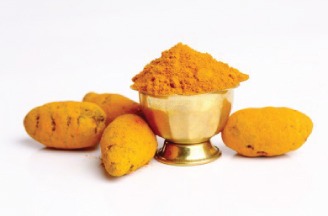What Are Natural Digestive Enzymes?
Digestive enzymes are special proteins our bodies produce to help break down the food we eat. They act like tiny, skilled chefs, chopping up fats, proteins, and carbs into smaller pieces so our bodies can absorb them. Without these enzymes, our digestive system wouldn’t be able to extract the essential nutrients we need to stay healthy. You can also find digestive enzymes in certain foods and supplements, which can be particularly helpful for those with digestive issues or enzyme deficiencies. Overall, these enzymes play a crucial role in ensuring our bodies get the nourishment they require. What are Natural Digestive Enzymes and Natural Sources of Enzymes? Ever noticed how certain foods seem like kitchen magicians, effortlessly turning complex ingredients into simple delights? These culinary secrets lie in nature’s offerings—fresh fruits, vegetables, and a spoonful of honey. They play a vital role in making our meals easily digestible, keeping our bodily functions in harmony. Just like a pinch of magic in a recipe, these natural elements add a dash of digestive ease to our daily lives. How Can Enzymes Be Utilized for Nutrition & Health? Enzymes are like the body’s digestive helpers. They break down the food we eat into smaller, more manageable pieces, allowing our bodies to absorb essential nutrients. Enzymes naturally occur in many fruits, vegetables, and raw honey, which can improve digestion when included in our diet. Additionally, enzyme supplements are available for individuals with specific digestive issues or enzyme deficiencies. Using enzymes for nutrition and health ensures that our bodies extract the maximum benefits from the foods we consume. They enhance digestion, making it easier for our systems to absorb vital vitamins, minerals, and energy from our meals. In this way, enzymes contribute to overall well-being, promoting better nutrient absorption and a healthier digestive system. What are the Sources of Natural of Digestive Enzymes? Natural sources of digestive enzymes are readily available in various foods, making it easier to support healthy digestion. 1. Honey: Raw honey is a natural source of enzymes like diastase and invertase. Diastase aids in breaking down starches into simpler sugars, while invertase converts sucrose into glucose and fructose. These enzymes support the initial digestion of carbohydrates and sugars, assisting in the easier absorption in the digestive tract. 2. Mangoes Mangoes contain amylases, enzymes that help break down complex carbohydrates into more manageable sugars like glucose and maltose. This enzymatic action facilitates the digestion and absorption of carbohydrates, ensuring the body can utilize them effectively for energy. 3. Bananas: Bananas offer amylase, an enzyme that initiates the digestion of carbohydrates by breaking down complex sugars into simpler forms. They also contain dietary fiber, aiding in regular bowel movements and promoting overall digestive health. 4. Avocados: Avocados provide lipase, an enzyme crucial for breaking down dietary fats into absorbable fatty acids and monoglycerides. This enzymatic activity is vital for efficient fat digestion and utilization in the body. 5. Fermented Cabbage (Sauerkraut): Fermented cabbage, like sauerkraut, is abundant in enzymes like amylase and cellulase due to the fermentation process. Amylase assists in breaking down carbohydrates, while cellulase helps in breaking down cellulose, a complex plant fiber. Additionally, sauerkraut contains probiotics that enhance gut health, further aiding in digestion and overall well-being. Conclusion Incorporating these natural sources of digestive enzymes into your diet can be a flavorful and health-conscious choice. From the sweet allure of honey to the tropical delight of mangoes, and the creamy richness of avocados, these foods not only tantalize your taste buds but also offer the digestive benefits of their unique enzymes. Don’t forget the probiotic-packed sauerkraut to complete the ensemble. By savoring these foods, you’re not just enjoying delicious flavors – you’re also fostering a harmonious relationship between your palate and your digestive well-being.














